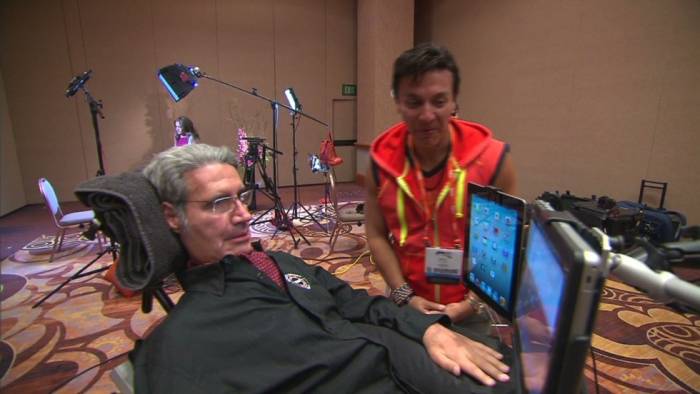Those nerve cells lose their ability to initiate and control muscle movement, which leads to paralysis and death. People with the condition lose control of muscle movement, eventually losing their ability to eat, speak, walk and, ultimately, breathe.
Its most famous sufferer was famed physicist Stephen Hawking, who died Wednesday at the age of 76.
ALS is also called Lou Gehrig's disease, after the famous baseball player who retired in 1939 because of the condition. Other notable people who had it are actor David Niven, NBA Hall of Famer George Yardley and jazz musician Charles Mingus.
Little is known about the causes of the disease, and there is no cure. The condition is slightly more common in men than women.
Unusually long life-span
Hawking, diagnosed with the condition in 1963, lived with it for more than 50 years -- a remarkably long time for an ALS sufferer.
The disease left him paralyzed and completely dependent on others and/or technology for everything: bathing, dressing, eating, mobility and speech. He was able to move only a few fingers on one hand.
"I try to lead as normal a life as possible, and not think about my condition, or regret the things it prevents me from doing, which are not that many," he wrote on his website.
"I have been lucky that my condition has progressed more slowly than is often the case. But it shows that one need not lose hope."
Hawking's life, including his battle with ALS, was made into a 2014 biopic, "The Theory of Everything," starring Eddie Redmayne.
Ice bucket challenge
The US Centers for Disease Control and Prevention estimates that 20,000 to 30,000 people have ALS in the United States, with about 5,000 new cases diagnosed every year. People usually find out that they have it between 55 and 75 years of age. On average, patients live two to five years after symptoms develop.
There are two types of ALS: sporadic, which is most common, and familial. The latter is inherited; the children of people who have it have a 50% chance of inheriting the condition, and people with familial ALS live an average of only one to two years after symptoms appear.
But it's much more rare than sporadic ALS, which accounts for over 90% of cases.
The condition gained widespread prominence in 2014 when Pete Frates, a former baseball player at Boston College who has been living with ALS since 2012, started the Ice Bucket Challenge. The viral sensation vastly improved awareness of the condition and caused a huge uptick in donations to the ALS Association.
"We have never seen anything like this in the history of the disease," said Barbara Newhouse, president and CEO of the ALS Association, in a news release at the time.
Cause unknown
For reasons not yet understood, military veterans are twice as likely to be diagnosed with ALS as the general public, according to the ALS Association.
"Scientists have been studying many factors that could be linked with ALS, such as heredity and environmental exposures," the CDC says.
"Other scientists have looked at diet or injury. No cause has been found for most cases of ALS. In the future, scientists may find that many factors together cause ALS."
Up until last year, there was only one FDA-approved drug for ALS, extending survival by several months. In May, the FDA approved the first new drug in more than 20 years to treat the condition.
CNN
More about: ALS
















































